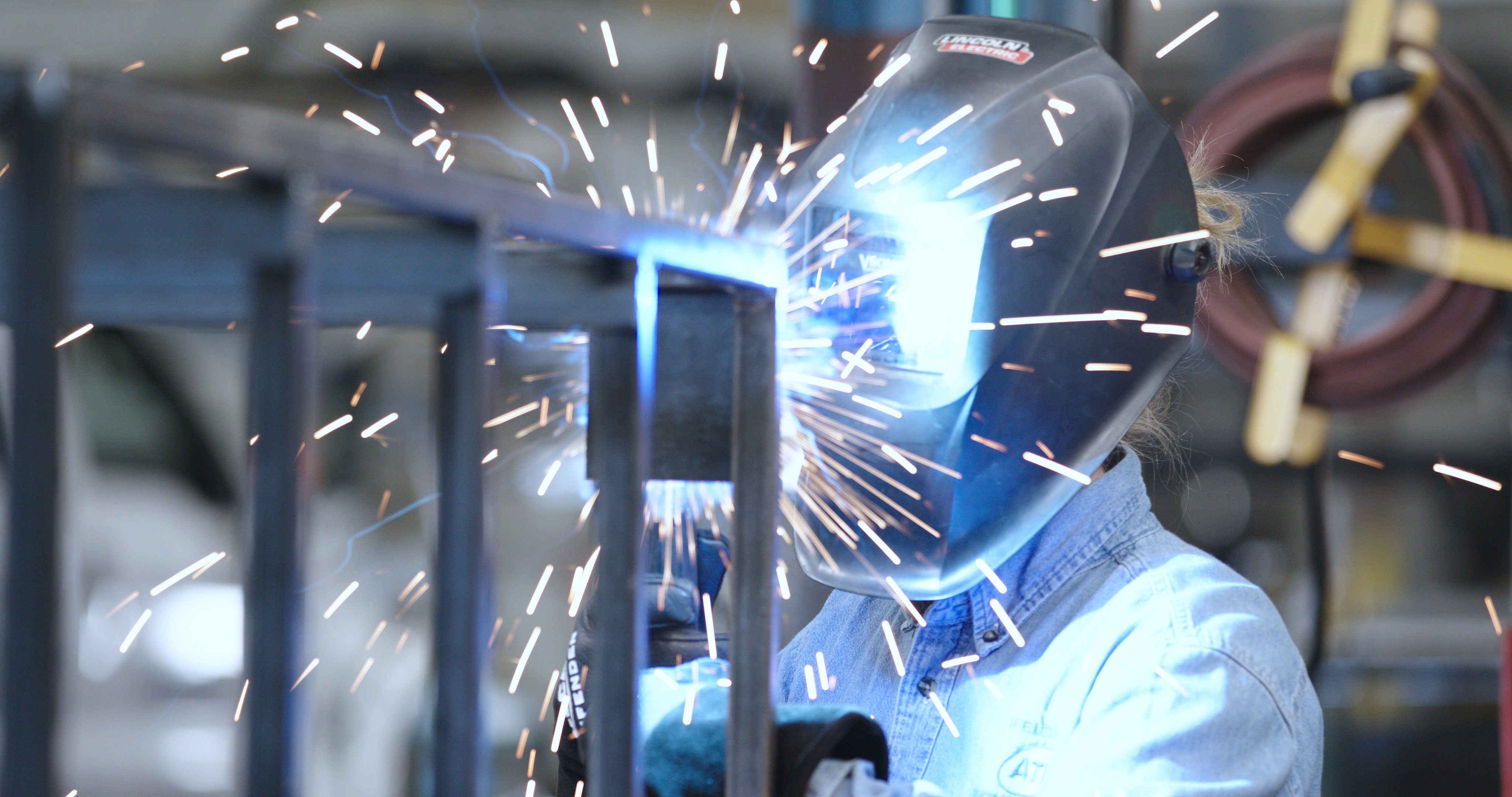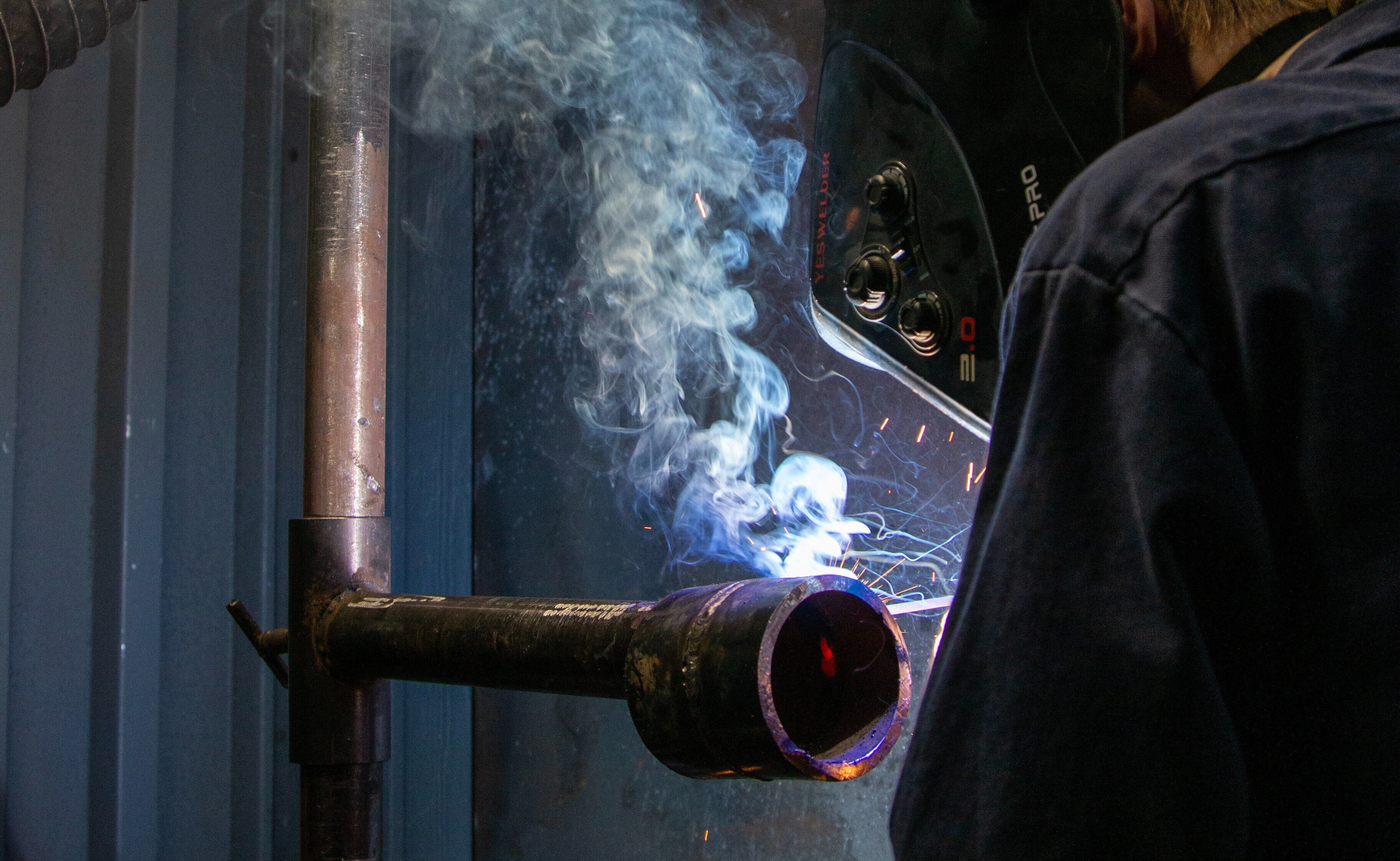Typical Welding Fixing Issues and Exactly How to Address Them Properly
Welding repair work frequently encounter a range of problems that can endanger the stability of the last item. Common problems consist of insufficient infiltration, porosity, and misalignment, among others. Each defect provides unique challenges that call for certain strategies for resolution. Understanding these issues is essential for welders aiming to enhance their abilities and outcomes. This conversation will discover these typical welding repair work issues and reliable approaches to resolve them.
Inadequate Infiltration
Inadequate penetration takes place when the weld steel falls short to completely fuse with the base material, causing weak joints and potential architectural failings. This problem often comes from not enough heat input, incorrect electrode angle, or improper welding rate. Welders may come across poor infiltration as a result of a mistake of the needed specifications for a details product thickness or type. Furthermore, contamination on the base material's surface area can impede reliable bonding, intensifying the problem. To deal with poor penetration, welders need to assure suitable settings on their devices and maintain a clean work surface. Regular evaluation of welds is recommended to determine any deficiencies early, allowing for timely corrections and the prevention of compromised structural integrity in bonded settings up.
Porosity
Porosity is a typical defect in bonded joints that materializes as tiny gas bubbles trapped within the weld metal. This issue can compromise the integrity of the weld, causing lowered stamina and prospective failure under stress and anxiety. Montana Mobile Welding and Repair. Porosity commonly emerges from contamination, dampness, or inappropriate welding techniques, which allow gases to escape into the molten weld swimming pool. To address porosity, welders should guarantee proper surface preparation, keep a tidy workplace, and use suitable welding criteria. In addition, choosing the best filler material and shielding gas can mitigate gas entrapment. Normal assessment and screening of welds can assist identify porosity early, assuring timely corrective activities are taken, consequently protecting the quality and reliability of the bonded structure
Misalignment
Misalignment in welding can arise from various variables, consisting of improper arrangement and thermal development. Understanding the source is crucial for efficient resolution. Several modification strategies are readily available to realign components and ensure architectural integrity.
Reasons of Imbalance
Welding misalignment commonly stems from a variety of underlying problems that can endanger structural integrity. One main reason is inappropriate fit-up of components before welding, which can bring about gaps and unequal surfaces. Variations in thermal expansion during the welding process can likewise cause distortion, specifically if the products being signed up with have different coefficients of growth. Additionally, insufficient fixturing and clamping might fall short to hold elements firmly in place, bring about movement throughout welding. Poorly kept tools, including welding devices and devices, may present inconsistencies in the weld bead, additional adding to misalignment. Finally, driver mistake, stemming from inadequate training or experience, can additionally play a significant role in producing misaligned welds.
Modification Methods Available
Addressing imbalance effectively requires a mix of rehabilitative methods customized to the specific concerns handy. One typical technique is making use of components or jigs to hold parts in the right setting during welding, making certain constant positioning. Furthermore, preheating the products can assist decrease distortion and improve fit-up. For substantial misalignment, mechanical realignment methods, such as utilizing hydraulic jacks or clamps, can be utilized to correct the placement prior to welding. Post-weld heat therapy may also be necessary to relieve stress and anxieties triggered by imbalance. Cautious inspection and modification throughout the configuration stage can stop imbalance issues from coming to be significant troubles, promoting a smoother welding process and boosting total structural stability.
Distortion
Distortion is an usual challenge in welding that can occur from different variables, including uneven heating and cooling. Recognizing the root causes of distortion is important for executing efficient avoidance methods. Resolving this concern not just boosts architectural honesty yet additionally boosts the total quality of the weld.
Sources of Distortion
When based on the intense heat of welding, products commonly go through modifications that can cause distortion. This phenomenon mostly develops from thermal growth and contraction during the welding procedure. As the weld location warms up, the material expands; upon cooling, it contracts, which can develop interior stress and anxieties. In enhancement, unequal heating across a workpiece can exacerbate these stresses, causing bending or flexing. The type of material likewise plays a significant duty; steels with differing thermal conductivity and coefficients of expansion might respond in a different way, causing unforeseeable distortions. Additionally, inadequate joint layout and poor fixturing can add to misalignment during welding, enhancing the likelihood of distortion. Recognizing these reasons is necessary for effective welding repair and avoidance techniques.
Avoidance Techniques
Efficient avoidance methods for distortion during welding concentrate on controlling warm input and guaranteeing correct joint style. Preserving a consistent warmth input assists to decrease thermal growth and contraction, which can bring about distortion. Making use of techniques such as preheating the workpiece can likewise minimize the temperature gradient, promoting consistent home heating. Furthermore, selecting suitable joint styles, such as T-joints or lap joints, can improve security and decrease stress concentrations. Applying appropriate fixturing to safeguard the work surfaces in location further aids in preserving placement throughout the welding procedure. Staggered welding series can distribute heat extra equally, avoiding local distortion. By using these methods, welders can significantly reduce the chance of distortion and enhance the total high quality of their welds.
Cracking
Cracking is a common concern experienced in welding repairs, commonly arising from various elements such as inappropriate cooling prices, material option, or inadequate joint prep work. The occurrence of fractures can substantially compromise the honesty of the weld, causing potential failures throughout procedure. To resolve this problem, welders should initially examine the root triggers, guaranteeing that products work and appropriately picked for the certain application. Additionally, managing the cooling price during the welding process is vital; fast cooling can cause stress and anxiety and cause splitting. Proper joint layout and preparation also add to reducing the risk. Carrying out these techniques can improve weld quality and toughness, inevitably decreasing the probability of splitting in ended up weldments.

Insufficient Fusion
A significant problem in welding repair work is incomplete fusion, which takes place when the weld metal does not sufficiently bond with the base product or previous weld passes - Montana Mobile Welding and Repair Welding. This defect can lead to weaknesses in the joint, possibly compromising the integrity of the welded framework. Factors adding to see this here incomplete blend consist of insufficient warm input, improper welding strategy, and contamination of the surfaces being joined. To resolve this concern efficiently, welders should assure correct pre-weld cleaning and surface preparation, as well as adjust their welding criteria to achieve sufficient infiltration and combination. Normal assessment during the welding process can likewise assist identify insufficient fusion early, enabling prompt rehabilitative measures to enhance the overall quality of the weld
Overheating
While welding repair work can other improve architectural honesty, overheating presents a substantial obstacle that can bring about product destruction. Too much warmth throughout welding can modify the mechanical homes of steels, resulting in minimized stamina, boosted brittleness, and warping. This sensation is specifically essential in high-stress applications where architectural integrity is extremely important. Recognizing getting too hot can involve visual inspections for staining or distortion, in addition to checking temperature throughout the welding procedure. To alleviate the dangers connected with overheating, welders need to use ideal methods, such as managing warm input, readjusting travel rate, and making use of ideal filler products. Furthermore, carrying out pre- and post-weld heat therapies can aid restore material properties and improve the general high quality of the fixing, making sure lasting efficiency and safety and security.
Often Asked Inquiries
What Are the Common Indicators of a Welding Flaw?

Just How Can I Test My Welds for Quality?
To look here examine welds for high quality, one can make use of visual evaluations, ultrasonic screening, and radiographic approaches. Each strategy guarantees architectural honesty, identifies flaws, and confirms adherence to defined standards, eventually enhancing the reliability of the bonded joints.
What Safety and security Precautions Should I Take While Welding?
When welding, one should focus on security by putting on proper personal protective devices, making sure proper ventilation, securing combustible products away, maintaining a clean workspace, and understanding surroundings to avoid injuries and crashes.
Can I Fix a Weld Without Redesigning the Entire Joint?
Fixing a weld without redesigning the entire joint is possible, depending on the damages (Fabrication). Techniques such as grinding, including filler material, or utilizing a welding process can successfully resolve particular imperfections while protecting the bordering framework
What Equipment Are Essential for Effective Welding Repairs?
Necessary tools for reliable welding repairs consist of a welding machine, cable brush, mill, protective gear, clamps, and filler products. Each tool plays an essential function in guaranteeing top quality and safety during the repair process. Porosity normally emerges from contamination, wetness, or inappropriate welding methods, which permit gases to leave into the molten weld swimming pool. Poorly maintained tools, including welding makers and devices, may present disparities in the weld grain, more adding to imbalance. When subjected to the intense heat of welding, products often undertake modifications that can lead to distortion. Fracturing is an usual problem encountered in welding repair services, usually resulting from numerous elements such as improper air conditioning prices, product choice, or poor joint preparation. A significant problem in welding fixings is insufficient combination, which takes place when the weld metal does not adequately bond with the base material or previous weld passes.
Comments on “Immediate responses to weld misalignment in Montana Mobile Welding and Repair Fabrication”